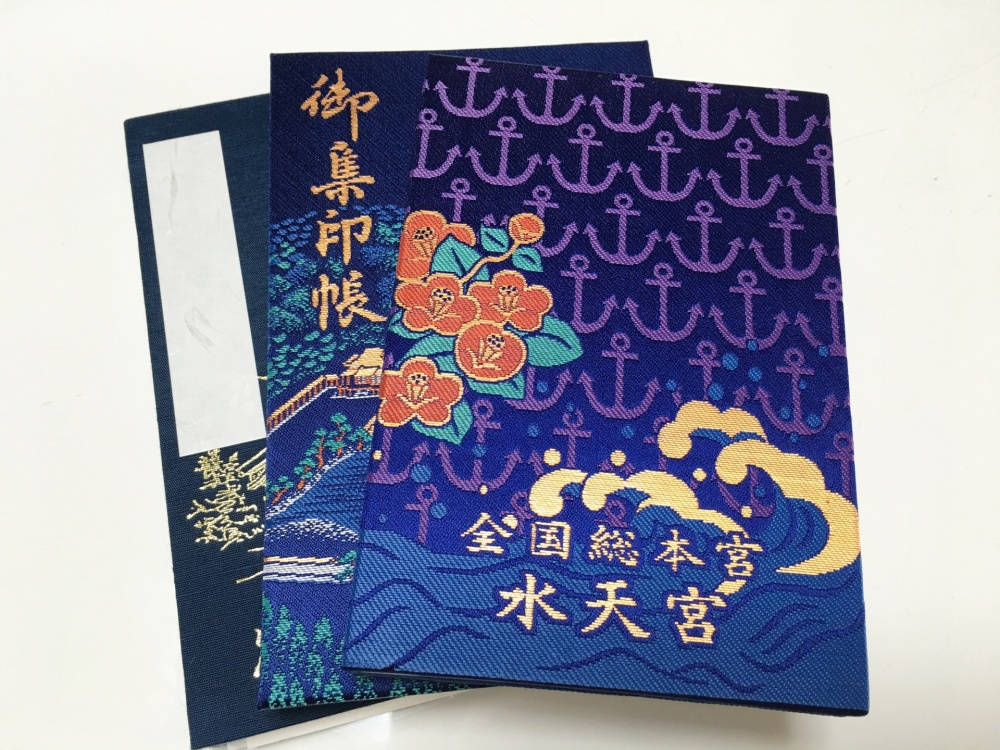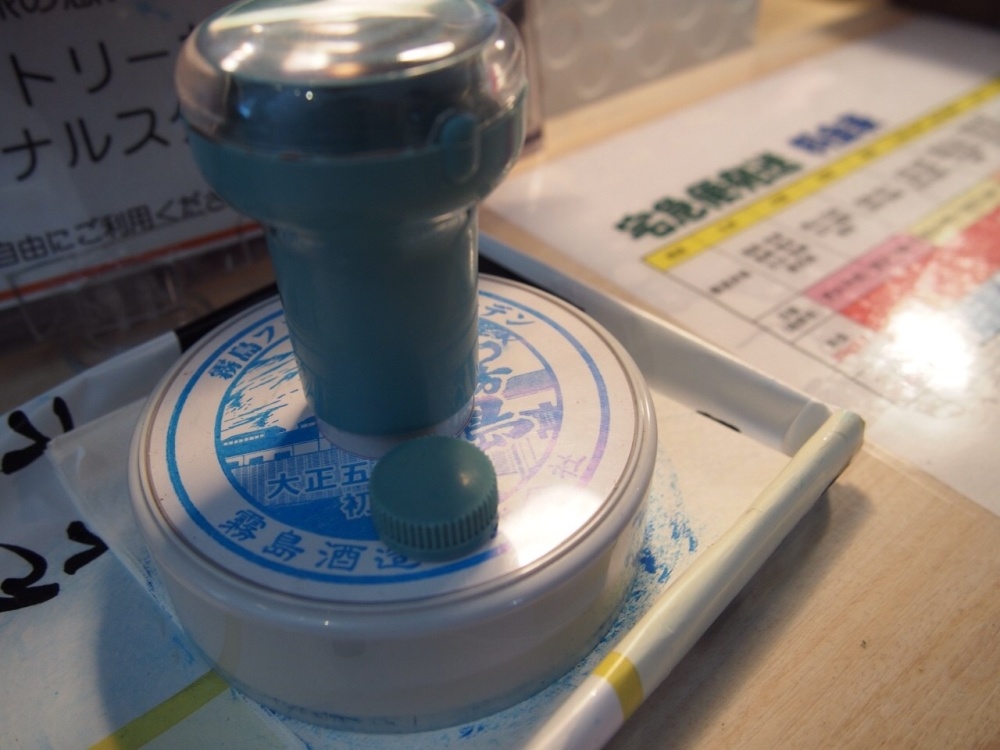Updated November 19, 2024
Japanese Stamp Books: How to Start Collecting
If you’ve traveled or lived in Japan, you’ve probably encountered small groups of people standing in line at shrines or roadside stops, pressing ink on cute little books.
Meet the Japanese subculture of stamp collecting, a delightful tradition that transforms travel into a fun little scavenger hunt.
This niche hobby is more than just a fun way to document your travels, as it’s also deeply tied to Japan’s history and culture, often becoming a lifelong passion for many.
So, come with me as we explore the different types of Japanese stamp books, from shrine seals to train station stamps, and explain how they can add a layer of magic to your travels through Japan.
In this article: 📝
What Are Japanese Stamp Books?
If you’ve read my post on hanko stamps, you already know that stamps are a big thing here in Japan. It’s a tradition that’s kept mostly alive to this day, not only for cute, decorative situations but even for official purposes.
Unlike Hanko stamps, however, these Japanese stamp books are solely for recreational and collection purposes. They’re used as a cherished way for travelers to document their journey in Japan by collecting stamps from specific locations like shrines, temples, train stations, castles, and even roadside stops.
There are a few different types of Japanese stamp books. One of the most common stamp books is the Japanese shrine stamp books, known as a “Goshuincho” or 御朱印帳.
Stamp books can serve as travel journals that celebrate the unique culture of each place visited. Collecting them may not exactly be a mainstream or “popular” hobby in Japan as it’s sort of a niche interest, but many local and international travelers enjoy collecting these stamps. The stamp book can become both a memorabilia and a travel checklist in one!
There are several types of Japanese stamp books, each tailored for collecting stamps from different types of locations, so let’s see what they are.
Japanese Shrine Stamp Books and Temple Stamps (Goshuin)
One of the most well-known types of stamps is the goshuin, the traditional stamp given at shrines and temples.
These stamps have a long history tracing back to Japan's Edo period when pilgrimages to sacred sites became common practice, and people began to receive blessings in written form. The tradition went on, and goshuin are still collected today by devout collectors and travelers alike as a spiritual memento.
When these beautiful handwritten calligraphy stamps, or “goshuin”, are drawn onto the pages of a Japanese shrine stamp book, or “goshuincho.” In addition to the main visual, a goshuin often includes intricate calligraphy that indicates the name of the temple or shrine and the date of the visit. The Goshuincho stamp book is also unique, and you can purchase the book in many different designs for around 1,000 to 1,500 yen. They’re usually hardcover books and the blank pages inside are made of thick calligraphy paper.
As we said, these stamps are not only mere collectible items but are also viewed as blessings, carrying spiritual significance. Collecting goshuin is like accumulating blessings from Japan’s sacred sites.
Receiving a goshuin is more than just a simple transaction — you get to watch as the temple’s staff or monk uses a brush to add delicate strokes of ink, emphasizing the spiritual elements of the tradition. However, in recent years, some shrines have started handing out pre-written goshuin pages for you to glue to your stamp book, due to the rise in visitors.
Goshuin books are available at most large shrines and temples throughout Japan. You can usually receive a stamp in exchange for a small fee of about 300 to 500 yen.
A fun fact about goshuin stamps is that there’s also a location in Hawaii that offers these, which might be the only place outside of Japan where you can collect one of these stamps.

Train Stamps (Eki Stamps)
This one is for our railway enthusiast readers, as eki stamps are a fun way to make train travel more exciting. These stamps are available at train stations across Japan, particularly in major cities and popular tourist destinations.
Eki stamps are unique to each station and typically feature local landmarks, mascots, or symbols that represent the area’s culture or history.
The tradition of collecting train stamps dates all the way back to the 1930s when Japan Railways introduced them as a way to promote tourism and encourage people to explore different parts of the country.
The stamps are often placed in easy-to-find locations within the station, such as near ticket gates or information desks, making them accessible to travelers of all ages. This is a beloved activity for both children and adult travelers, serving as a fun memento of their journey.
Some stations even create limited-edition stamps for special events and anniversaries, adding another layer of fun by offering exclusivity and excitement.
Collecting eki stamps is not just about the stamps themselves but also about the journey they represent. Many collectors enjoy planning their travels around stations with particularly interesting or well-designed stamps and visit new places along the way just to add new stamps to their collections.
Stamps are so popular that stamp rallies are also organized for Eki stamps. With themed stamp cards or planned routes, travelers can collect all of the pre-determined stamps to win prizes. This interactive aspect makes traveling in Japan as a foreigner extra fun, providing some novelty.
The artistry of Eki stamps makes them an essential part of any train enthusiast’s experience in Japan. Whether you’re commuting through a busy city, going on the Shinkansen, or riding scenic rural lines, having an Eki stamp book at hand can transform your journey into an exciting adventure.
Roadside Station Eki Stamp Books: Michi no Eki Stamps
Another lesser-known but fascinating type of Japanese stamp book involves the Michi no Eki or roadside stations. Michi no Eki are government-designated rest areas found along highways and roads across Japan, providing travelers with local specialties, fresh produce, and regional souvenirs.
These stations have free parking lots and restrooms that are open 24 hours a day all year long and usually have vending machines, ATMs, and other stores and restaurants available during the day time. The toilets here are usually kept very clean, and you can even take a shower at some facilities.
Many Michi no Eki also offer their own stamps to collect, making them ideal for road trip lovers. If you’re the type who loves to drive everywhere, this is a nice encouragement to discover Japan at your own pace.

Collecting Michi no Eki Stamps
The stamps available at Michi no Eki are also usually themed around local specialties, nature, or historical elements related to the area.
Collecting the Michi no Eki stamps can be more of a challenge compared to what we’ve covered so far, as these stations are often located in rural areas. It’s an activity best suited for those who love exploring off-the-beaten-path destinations.
Still, some Michi no Eki have even become famous for their elaborate designs and serve as destinations in their own right.
If you don’t want to go out of your way, you can only collect the ones that are on your way, which some people very much do. They like to pop out of the car for a few minutes to get their stamps before continuing their journey.
Lastly, keep in mind that some roadside stations even host local festivals and events. Some also sell local produce and specialty items, offering an opportunity to experience local traditions firsthand. So, a little bit of research before planning a trip can help you discover fun, exciting events along your route.
Japanese Castle Stamp Books and Other Obscure Stamps
While shrine, temple, and train stamps are most popular among collectors, you can collect even more niche stamps, like castle stamps.
These are ideal for history buffs interested in Japan’s feudal past. Historical castles across Japan offer these stamps to commemorate visits, and let’s just say that there are quite a lot of them. So you won’t run out of stamps to collect anytime soon.
The stamps offered at these places usually feature the castle’s silhouette, crest, or architectural elements. Notable castles like Himeji and Matsumoto have particularly beautiful stamps that should be the starting point of any collection.
Then, there are Onsen stamps, which are offered at many hot spring resorts and reflect the cultural significance of these beloved spots. Japan’s abundance of onsens has been the topic of many of our discussions on this blog, but my post on tattoo-friendly onsens has lots of great recommendations for foreigners.
Finally, shopping mall stamps are another quirky sub-category of the stamp culture. Some malls have their own stamps, encouraging visitors to explore different areas and complete stamp rallies. These stamps often feature the mall’s mascot or designs representing the local commercial culture.
From feudal castles to hot springs, these stamps all add an extra element of enjoyment to traveling, and collecting them can be an event in itself.
All About Stamp Rallies
Stamp rallies are organized events where participants visit specific locations to collect stamps, often following a theme. Stamp rallies are held across Japan in various forms – ranging from those organized by train stations to those hosted by popular attractions site, like castles and shopping malls, as we’ve mentioned.
The rallies are designed to encourage people to explore multiple locations and can be a great travel activity for foreign visitors and residents looking to discover the country.
Usually, participants receive a booklet or map indicating the stamp locations, and the goal is to collect as many stamps as possible. Some rallies even offer rewards or exclusive items for completing a collection, adding a layer of excitement to the experience.
You can find stamp rallies all over tourist attractions, train networks, and even seasonal festivals, so they’re quite common. Castle stamps are a good example of this. You can even pick up a 100-castle stamp rally book from a bookstore or a newsstand.
Stamp rallies turn sightseeing into a game-like adventure, motivating participants to explore places they wouldn’t visit on their own. So, whether it’s onsen or castle stamps, collecting them can help you make some unusual and fun memories in Japan.
Final Word: The Low-Down on Japanese Stamp Collecting

If you’re interested in Japanese stamp collecting, here’s how you can start your collection.
First, you need a stamp book, which can be purchased at major shrines, temples, train stations, or souvenir shops.
Goschuincho for shrines and temples are usually beautifully designed and a must-have, but you can also use generic notebooks or stamp books for roadside and castle stamps.
Collecting the stamps provides a purpose for exploration. So, once you have your book, whether you travel by train or car, making Japanese stamp collecting a hobby can allow you to have adventures you otherwise wouldn’t have.
While this is all we have on Japanese stamp books, if you’re interested in other travel-related topics, give Choosing Destinations in Travel and Career a read.
Get Job Alerts
Sign up for our newsletter to get hand-picked tech jobs in Japan – straight to your inbox.







